What is of Intensities Has the Same Value for Continuous Wave Us
PRODUCTION OF SOUND WAVES
Note: Click any image to enlarge.
Categories of Sound:
- INFRASOUND = < 20 Hz
- AUDIBLE SOUND = 20 Hz to 20 kHz ; All other frequencies cannot be detected by the human ear
- ULTRASOUND = > 20 kHz
- DIAGNOSTIC ULTRASOUND = > 2MHz
Factors Affecting Propagation:
Stiffness and density properties of a material determine the speed of sound propagation in the material
- Stiffness: AKA bulk modulus; There is a significant increase in sound velocity with small increases in stiffness of the material
- Density: An increase in density results in a slight decrease in the sound velocity
- Compressibility: The opposite of stiffness, Increasing compressibility causes a decrease in propagation speed
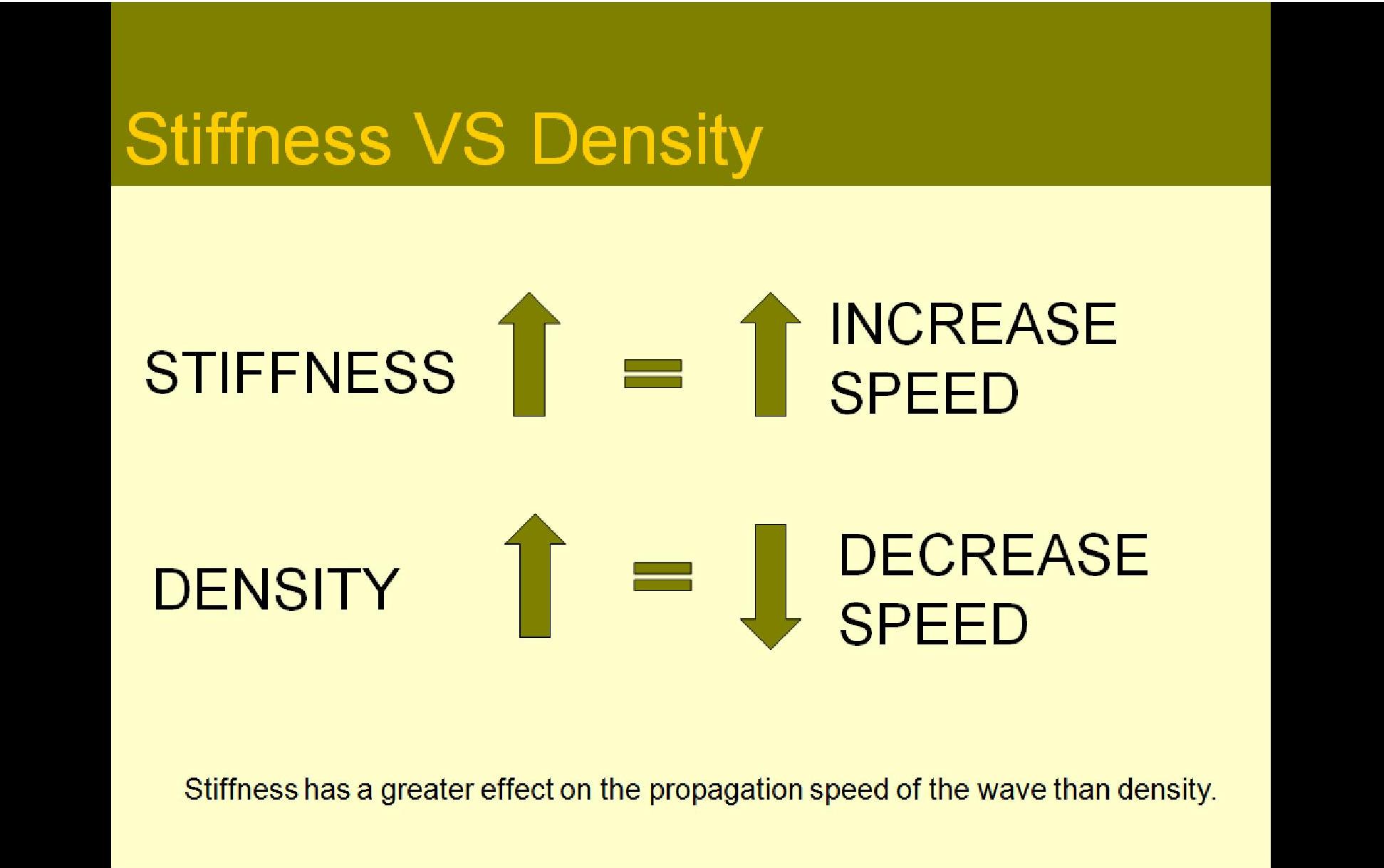
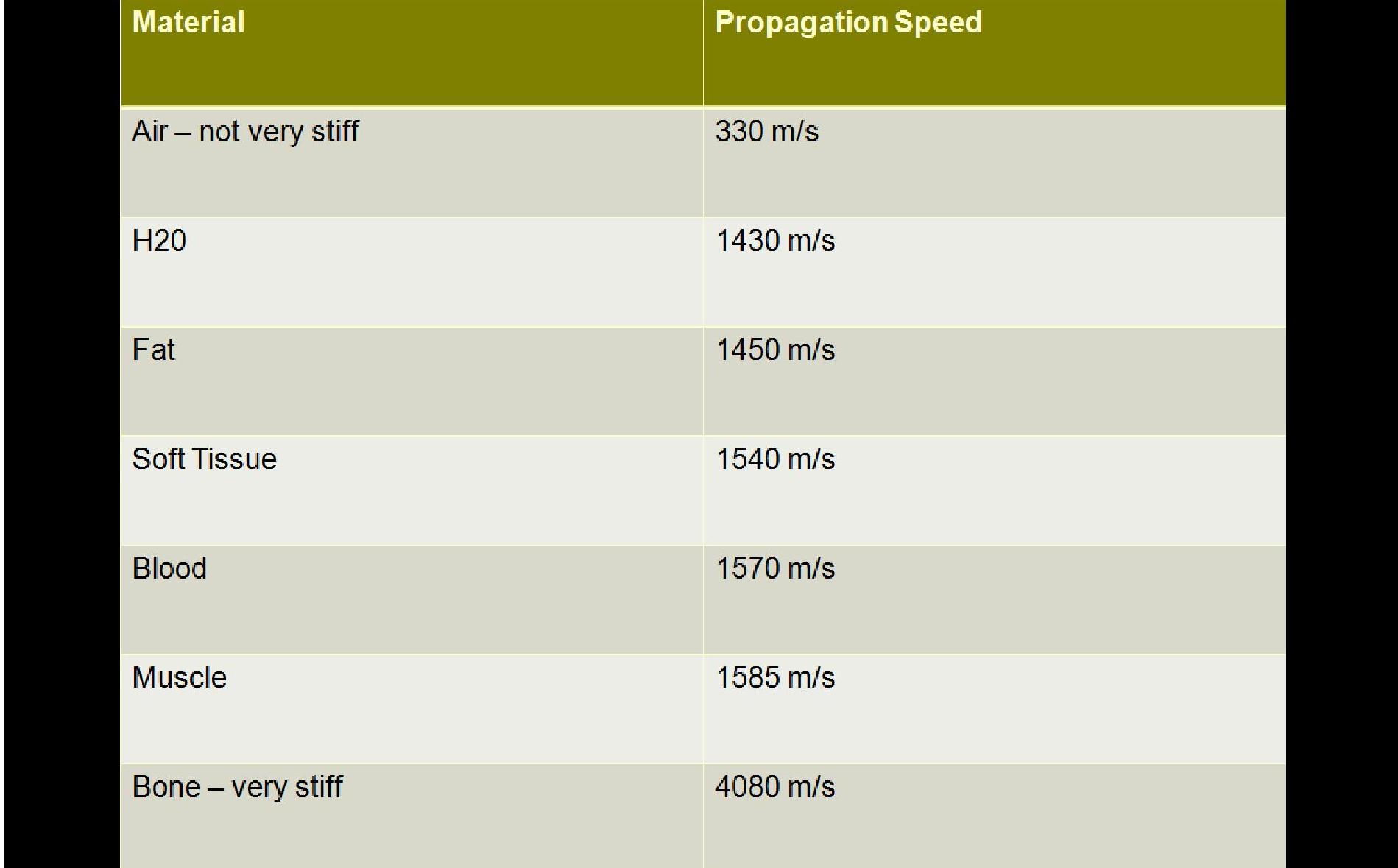
Sound Propagation:
- Mechanical wave requires a medium to travel, cannot travel in a vacuum
- Sound waves move through matter by causing molecules to vibrate successively along their path
- Sound waves carry energy from one point to another; no matter or particles are carried along the waveform
Piezoelectric Effect:
- The conversion of electrical energy into mechanical energy – transmission of the sound beam
- The conversion of mechanical energy into electrical energy – receiving the reflected beam information
- Electricity is applied to the piezoelectric material which vibrates (expands and contracts) to produce mechanical sound or pressure waves
- Returning sound waves cause mechanical vibrations (acoustic pressure) of the piezoelectric material that are converted into the electrical signal for the display
PE Materials:
- Certain types of materials produce a sound wave when pressure deforms them from voltage applied
- Average propagation speed in a PE element is 4-6mm/ms
- Ceramic Materials
> Lead zirconate titanate - #1 most common
> Barium titanate
> Lead metaniobate
> Lead titanate
- Natural Elements
> Quartz - used in musculoskeletal and other high frequency superficial imaging probes
> Tourmaline
> Rochelle Salt
Piezoelectric Elements:
- Piezoelectric characteristics are caused in certain ceramic materials when polarized at a temperature above its Curie point (avg. 360 degrees Fahrenheit)
- If a transducer is reheated above the Curie point, depolarization may result and the element will lose the ability to produce sound waves
- Continuous Wave production requires two piezoelectric elements, one to transmit and one to receive
- Pulsed Wave production uses one piezoelectric element and alternates using it to transmit and receive sound waves
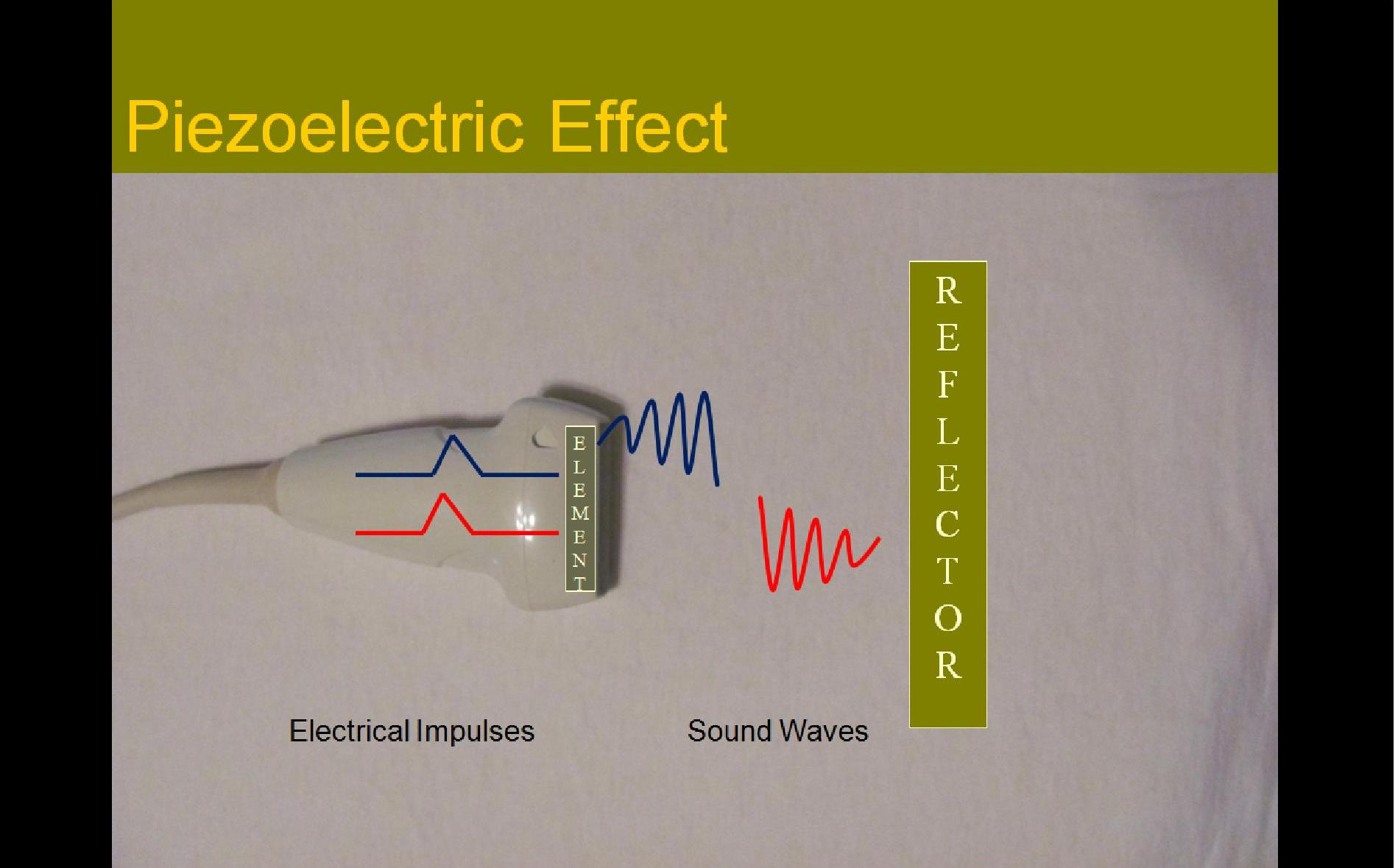
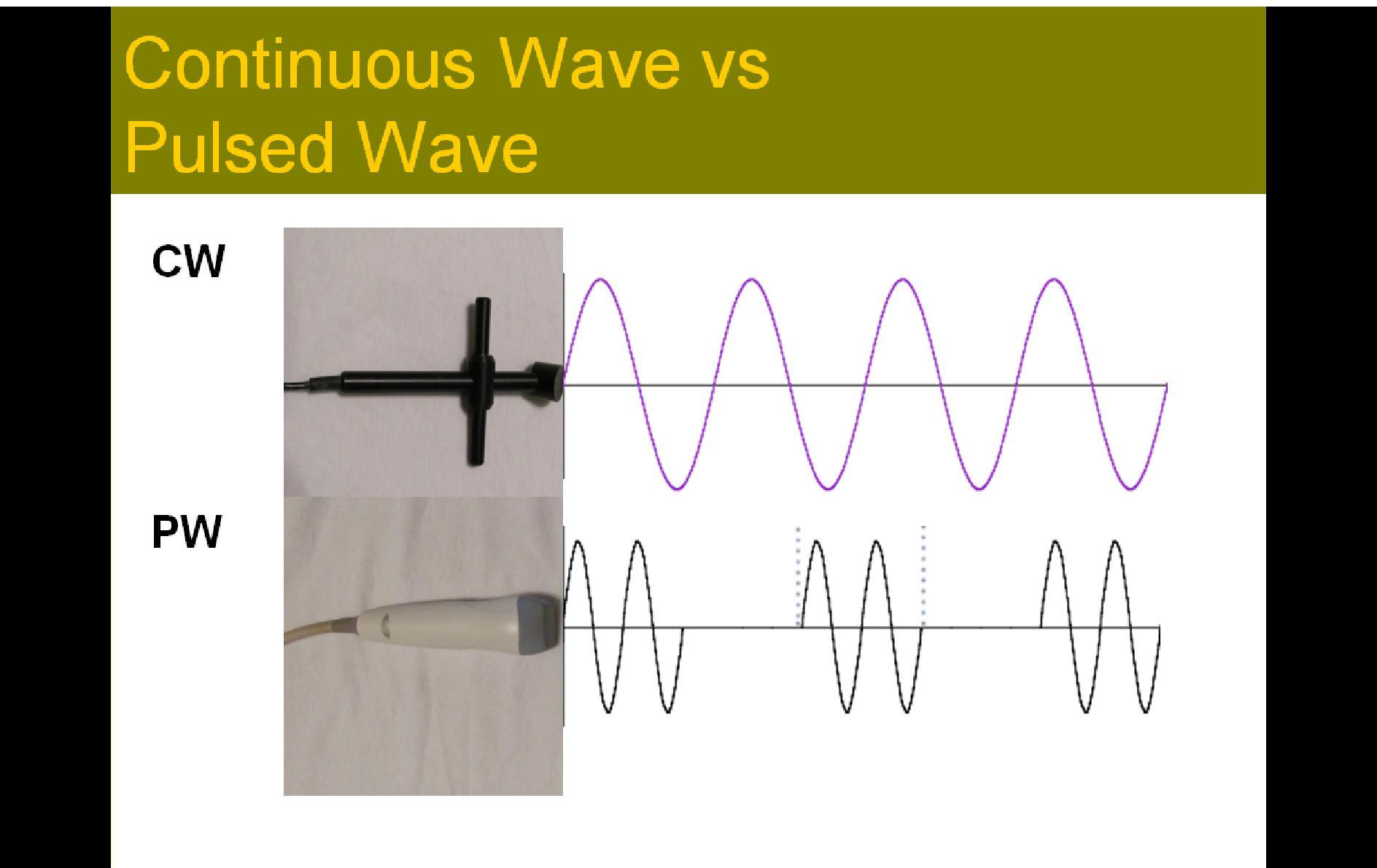
Sound Waves:
- Longitudinal: particle motion parallel to wave motion
- Mechanical: requires a medium to travel
- Cannot travel in vacuum
- Carry energy not matter
- Travel in straight lines
- Compression: positive amplitude of wave, an area of high pressure and particle density on a pressure wave is referred to as a compression
- Rarefaction: negative amplitude of wave, an area of low pressure and particle density on a pressure wave is referred to as a rarefaction
- Cycle: one compression and one rarefaction
Acoustic Variables:
- Four types of recordable changes occur with the mechanical interaction of the wave and the medium
- Pressure, temperature, density and particle motion
- Changes in these variables can lead to damage to the medium (bioeffects)
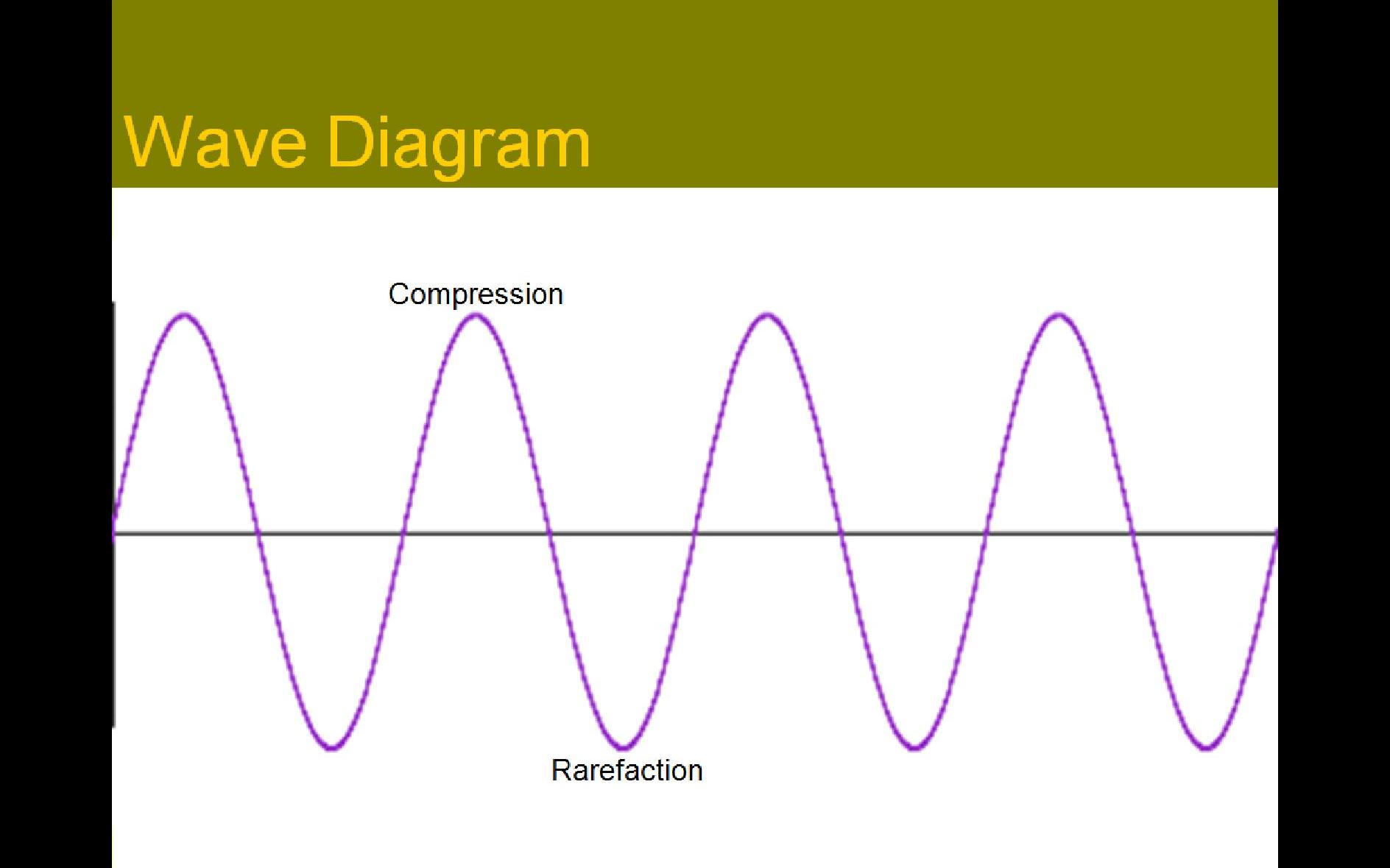
Types of Waves:
- Longitudinal – particles move parallel to the direction of the wave movement
EX: snake movement along the ground
- Transverse – particles move perpendicular to the direction of the wave movement
EX: Ocean wave traveling toward the beach, inchworm movement along the ground
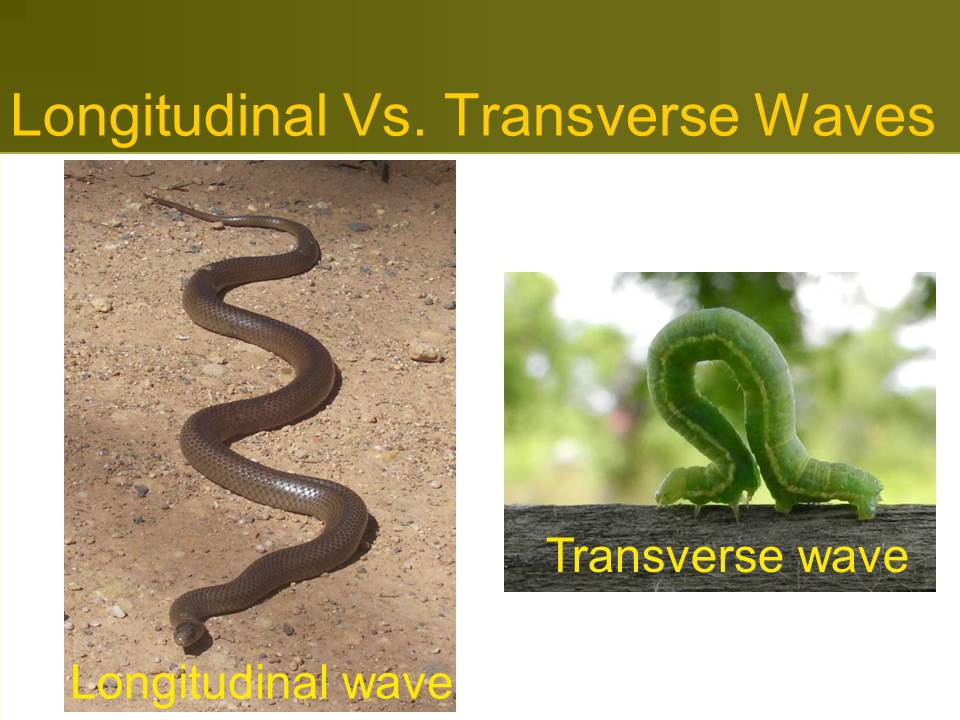
Wave Parameters:
Amplitude:
- Difference between the average value and the maximum value of the wave intensity (compression)
- Difference between the average value and the minimum value of the wave intensity (rarefaction)
- Height of the compression or depth of the rarefaction (+ or -)
- Indicates relative intensity or strength of the wave
- Peak to Peak Amplitude refers to the difference between the minimum and maximum value of the sound wave intensity
- Decreases as it travels through tissue and attenuation occurs
- Proportional to power/voltage; Power = Amplitude squared
- If the amplitude decreases by 1/2 of the original value, the power decreases to 1/4 of its original value
- If the amplitude decreases to 1/3 of the original value, the power decreases to 1/9 of its original value
- Units: mm or cm
- Operator adjustable with output power controls
- Determined by the US system/probe
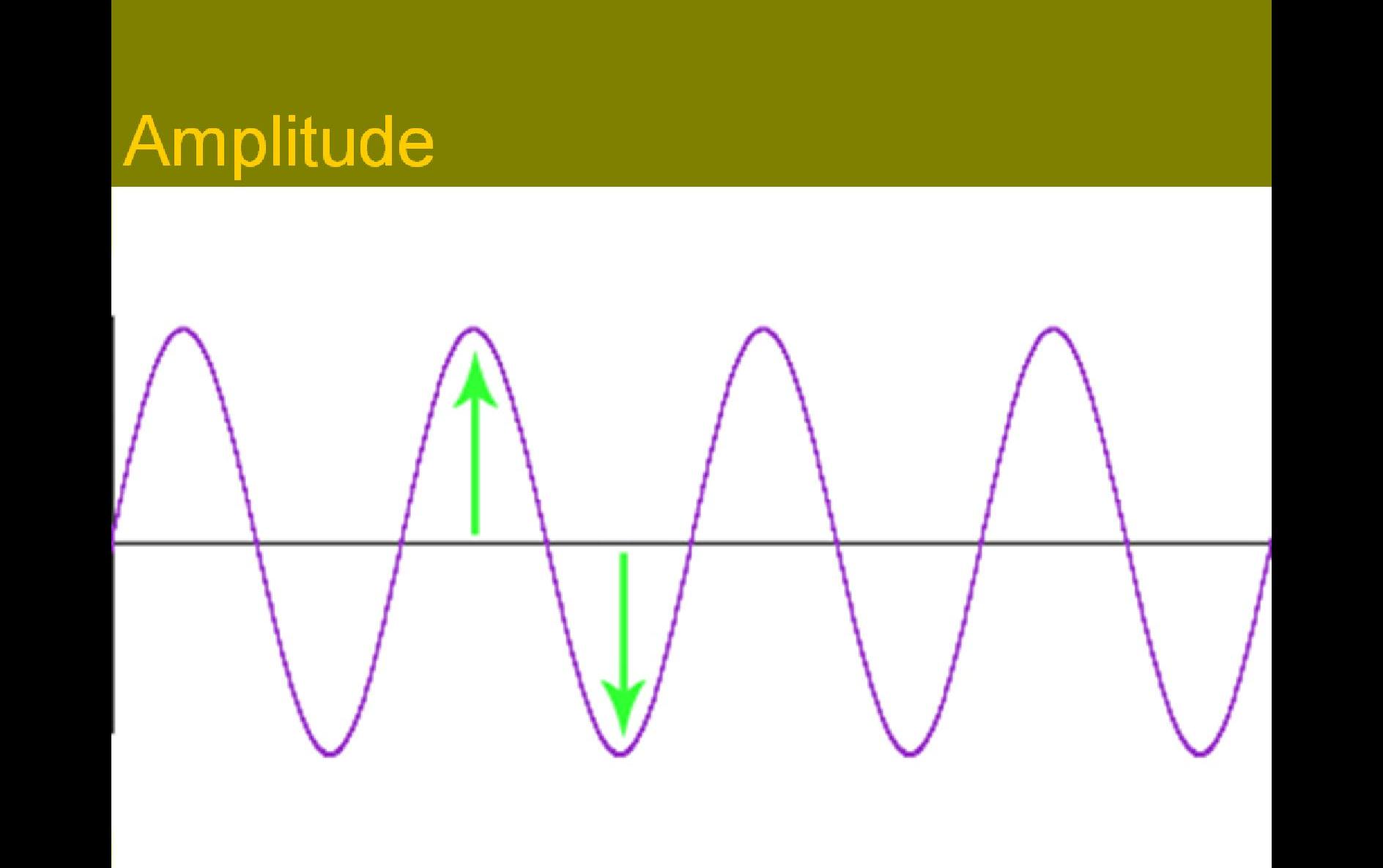
Power:
- Rate energy transmitted into substance OR the rate work is performed
- Units: W or mW
- Operator adjustable by output power controls
- Power = A2
- Higher power settings are related to increased risk for the occurrence of bioeffects
- Power diminishes as the wave travels through a medium
- If power doubles, intensity doubles
- If power triples, intensity triples
- If amplitude doubles, power increases to 4X original value
- If amplitude triples, power increases to 9X original value
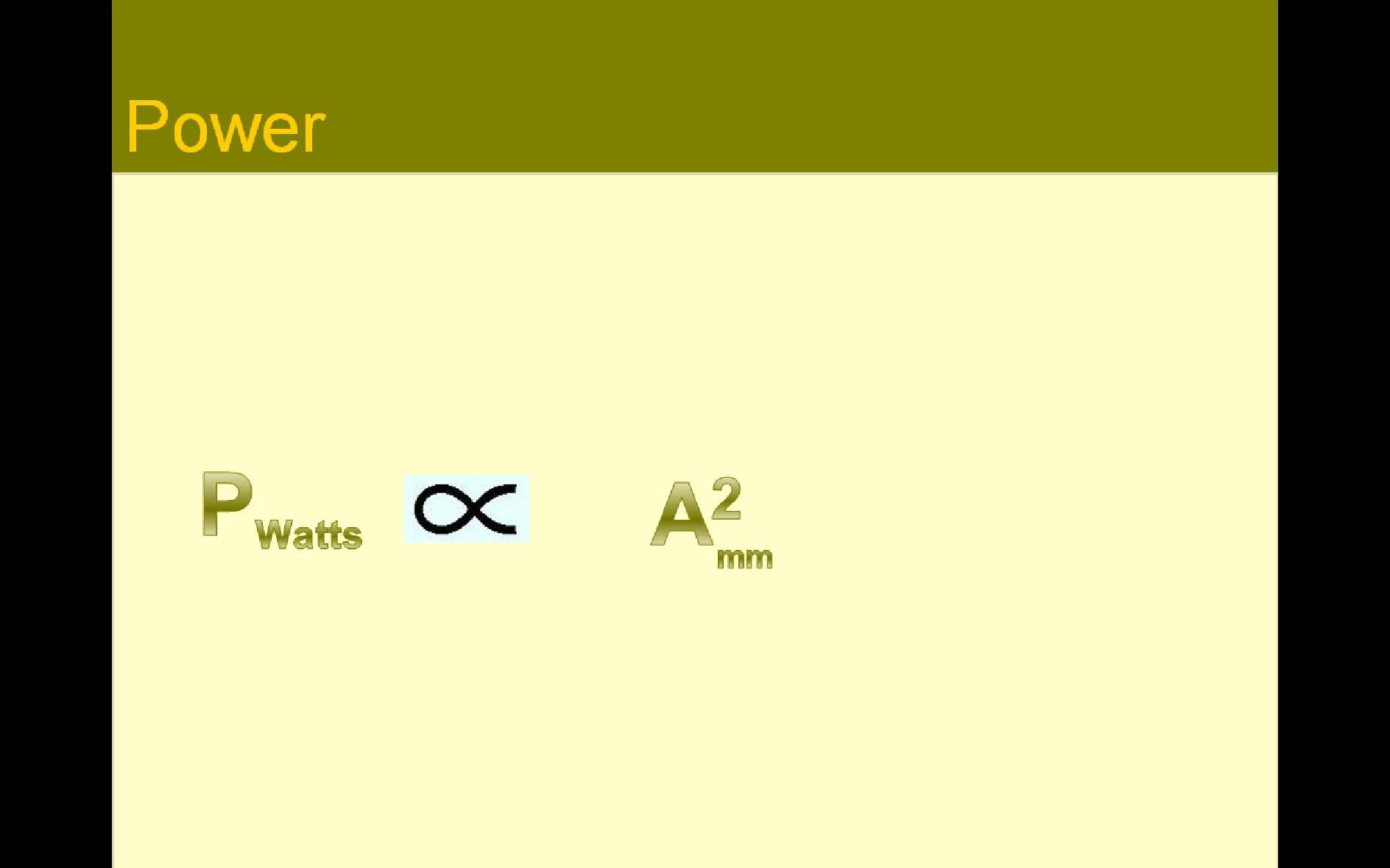
Intensity:
- The rate energy travels through a substance
- Best indicator for the related risk of bioeffects
- Power and area are inversely related in regards to intensity
- Intensity = Power/Area
- Power = (Amplitude)2 = Intensity of the beam
- Units: mW/cm2
- Diminishes as wave travels through media
- Operator adjustable with output power and electronic focusing
- The intensity at a more shallow focal zone will be higher than the intensity at a deeper focal zone on the same US beam
- The wider the element, the greater the beam area
- The larger the area of the beam, the lower the intensity of the beam when power is constant
- If beam area doubles with no change in power, intensity is reduced to 50%
- The smaller the area of the beam, the higher the intensity of the beam when power is constant
- If the beam area is decreased by 50% with no change in power, intensity is doubled
Half Intensity Depth:
- Defined as the depth at which the intensity of the beam is reduced to 1/2 the original intensity
- Attenuation reduces beam intensity as it travels through tissue.
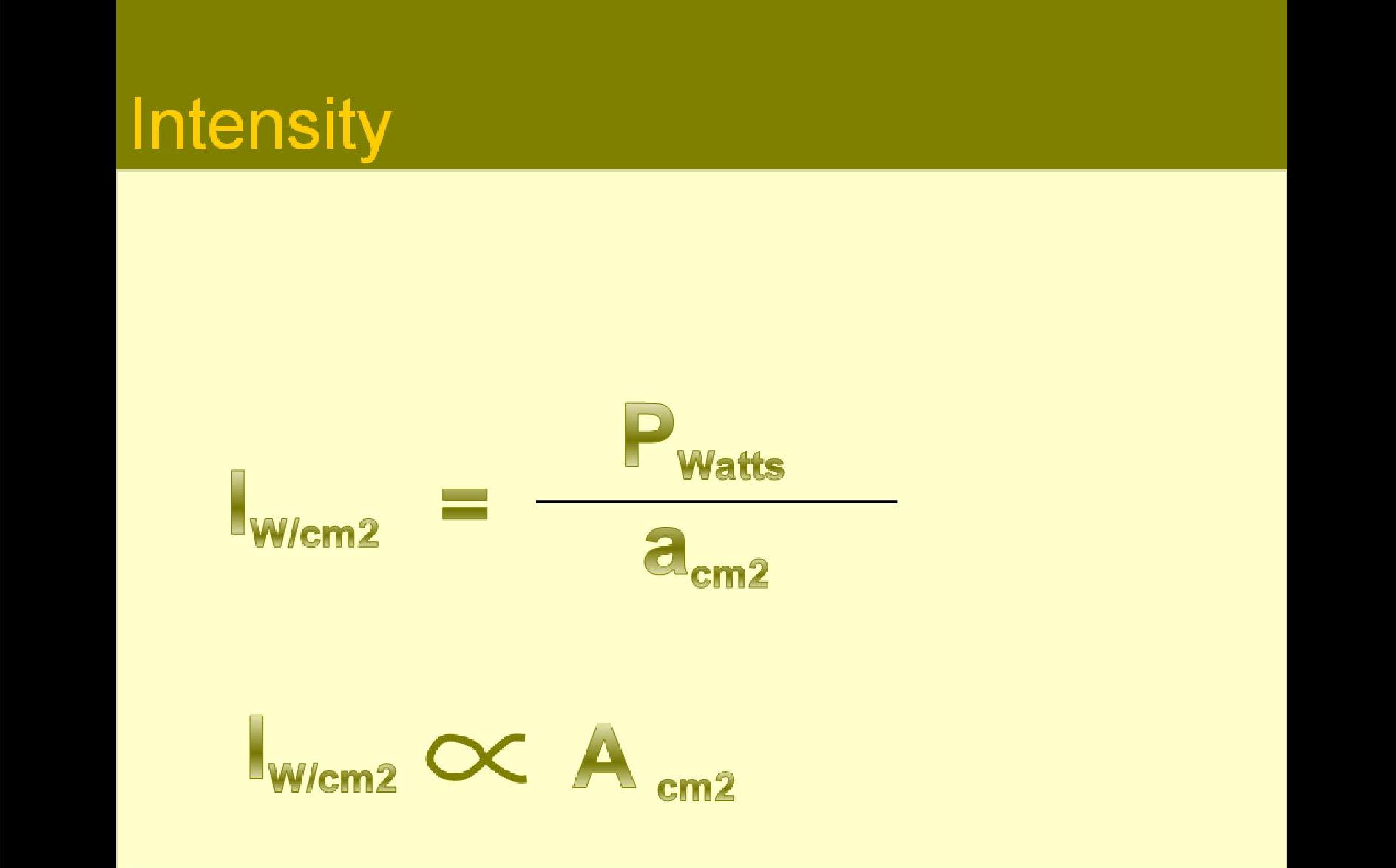
Propagation Speed:
- Determined by medium
- 1540 m/s standard speed in soft tissue (c)
- Fastest to Slowest
> Solids
> Liquids
> Gases
- Range in human body: 500m/s – 4000m/s
- Only changes when the sound wave travels into a different media
- Does NOT vary with frequency or wavelength of the sound waves
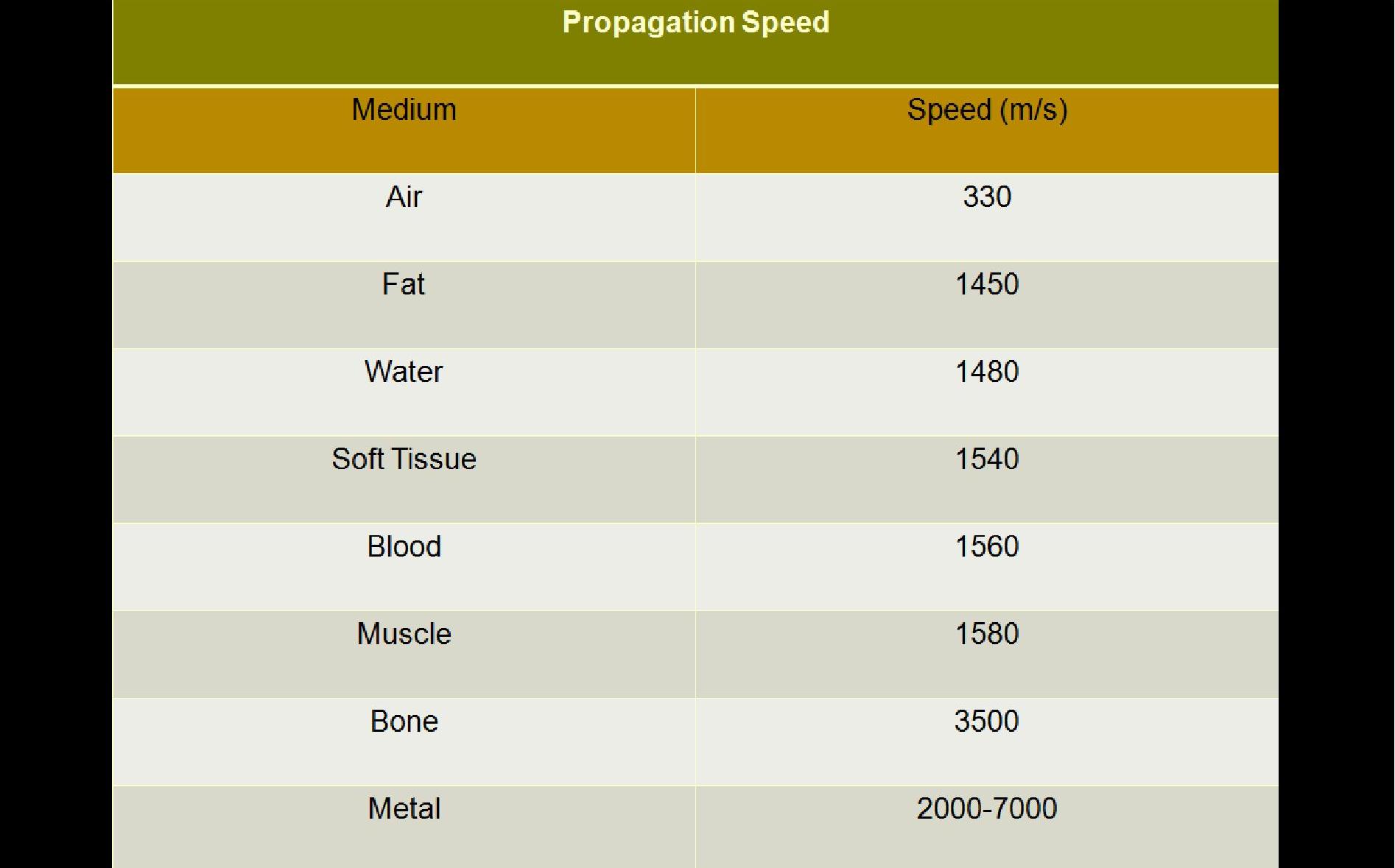
Frequency:
- Number of vibrations per second of an energy waveform
- Frequency of sound is measured in Hertz or cycles per second
- Each cycle consists of a compression and a rarefaction
- Units: Hz, kHz, MHz
- NOT operator adjustable
- Determined by the US probe
- Pulsed US frequency varies with the thickness of the element and the speed of sound in the element
- Continuous US frequency is determined by electrical frequency applied to the element
- Frequency remains constant at all depths as the sound wave travels through a medium
- Frequency does NOT change if you change from pulsed to continuous transmission
- Diagnostic US 2 - 15MHz
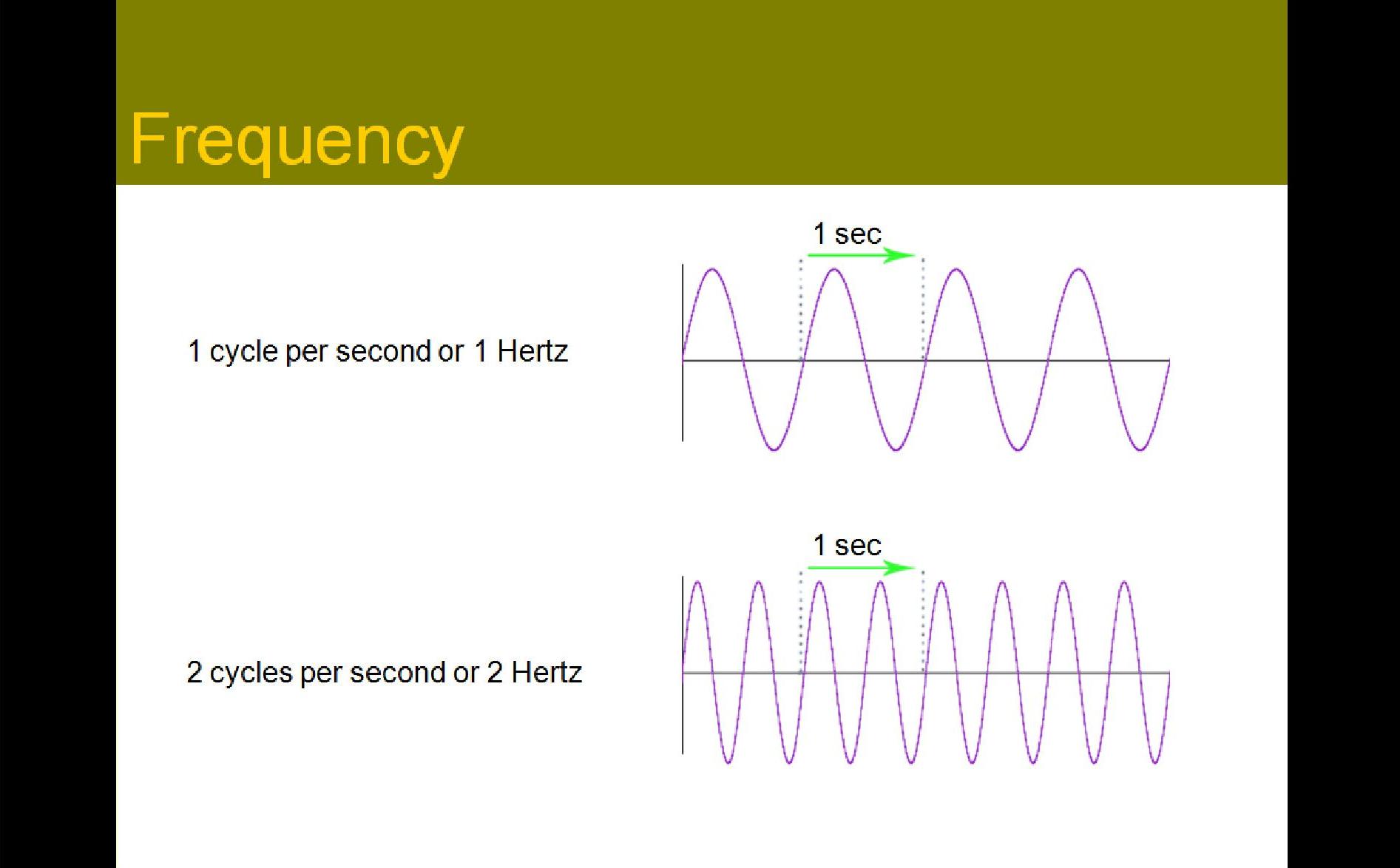
Period:
- The time it takes for one cycle to occur
- Period is the reciprocal of frequency
- 1 / frequency = period
- As frequency increases, period decreases
- Units: sec, ms, µs
- Diagnostic US 0.08 - 0.5 µs
- NOT operator adjustable
- Determined by the US system/probe
- Lower frequency waves have longer periods and longer wavelengths
- Remains constant as sound travels through medium
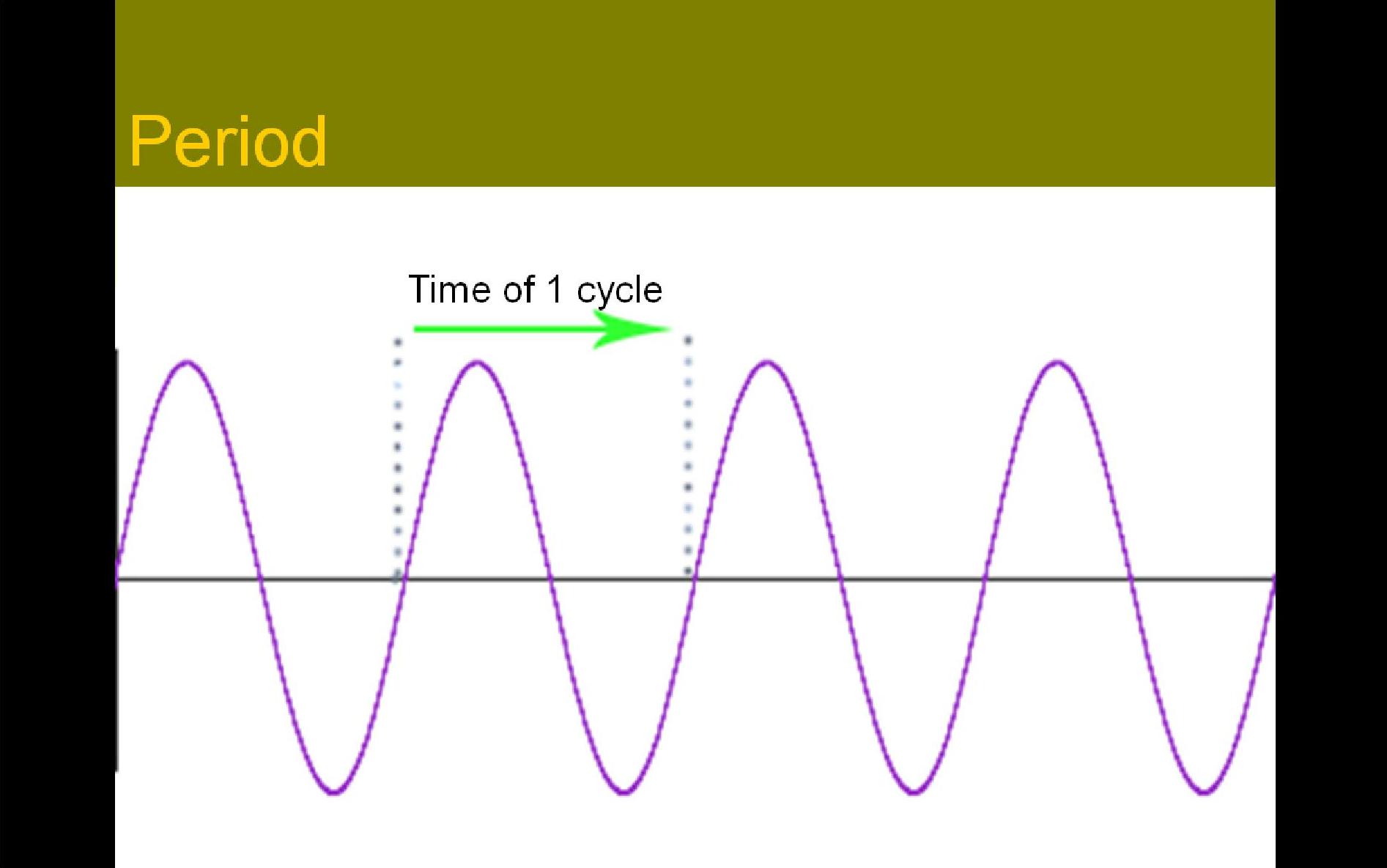
Wavelength:
- The distance traveled by one cycle (one compression and one rarefaction)
- Measured in mm
- Average in US of soft tissue 0.1 - 0.8mm
- Inversely related to frequency with sound propagation
- The higher the frequency, the shorter the wavelength
- Not operator adjustable
- ONLY sound parameter determined by the US system/probe AND medium
- Lower frequency waves have longer periods and longer wavelengths
- Increases in length as the wave travels through tissue
- Sound waves with shorter wavelengths are preferred to produce the best 2D image
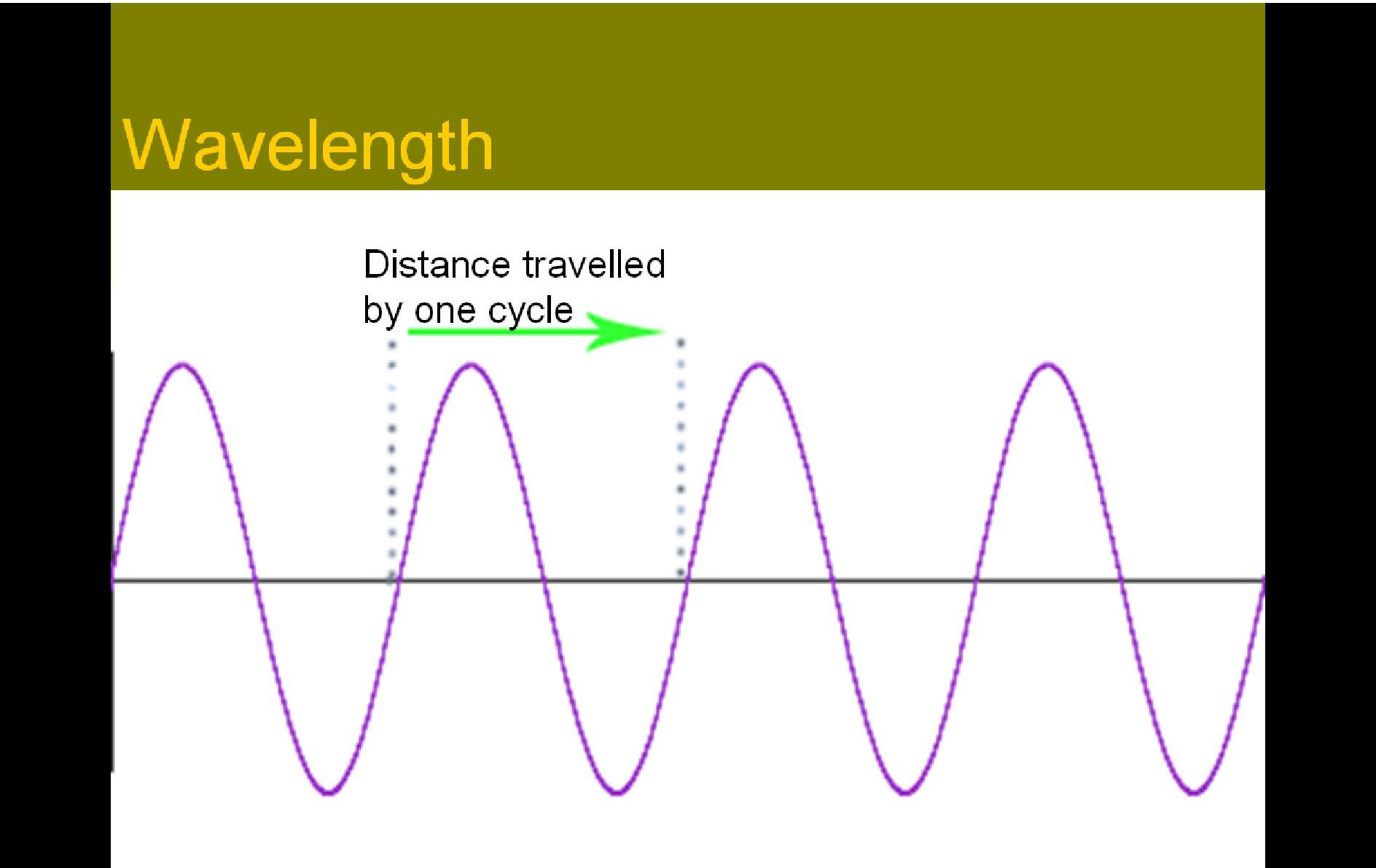
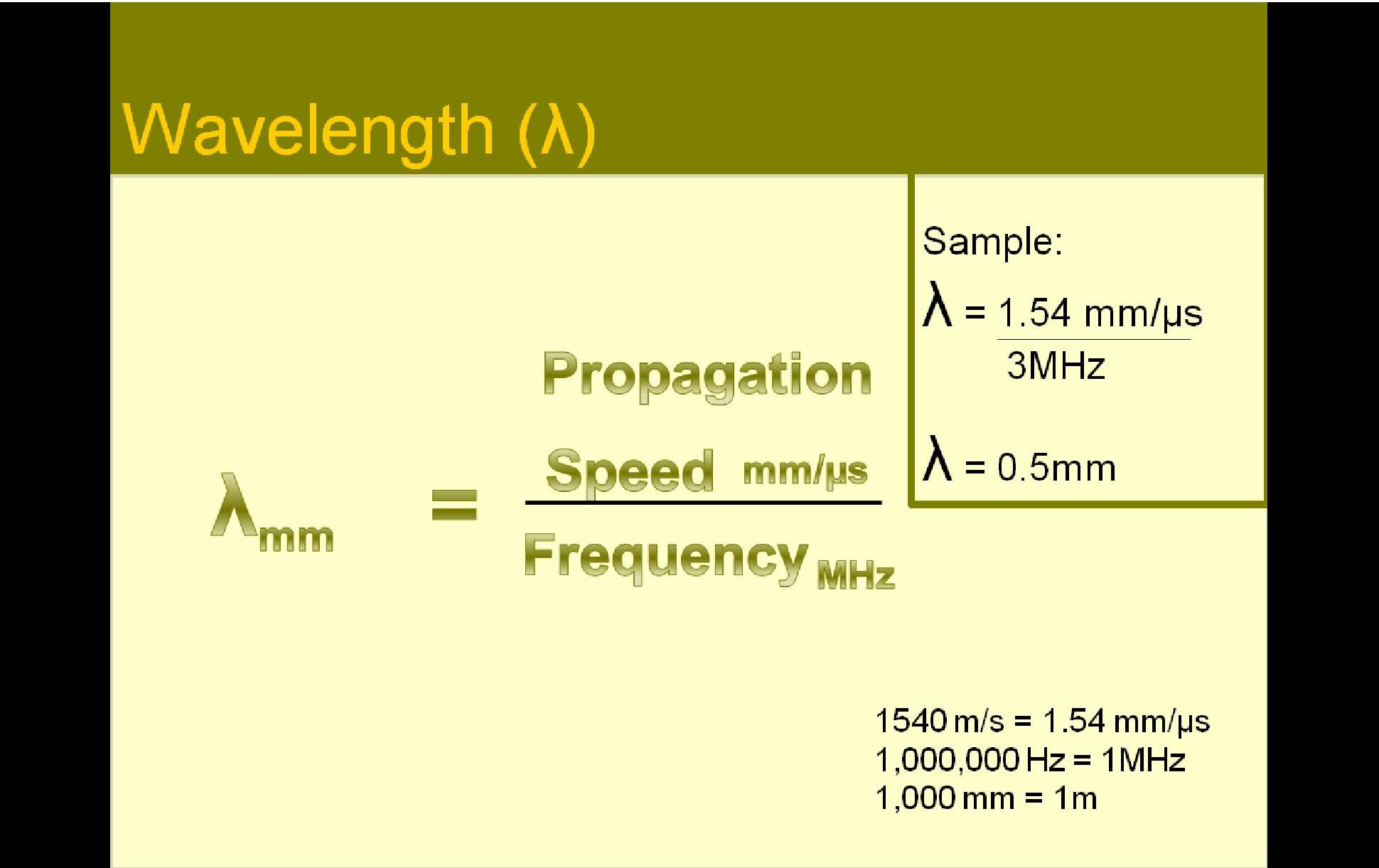
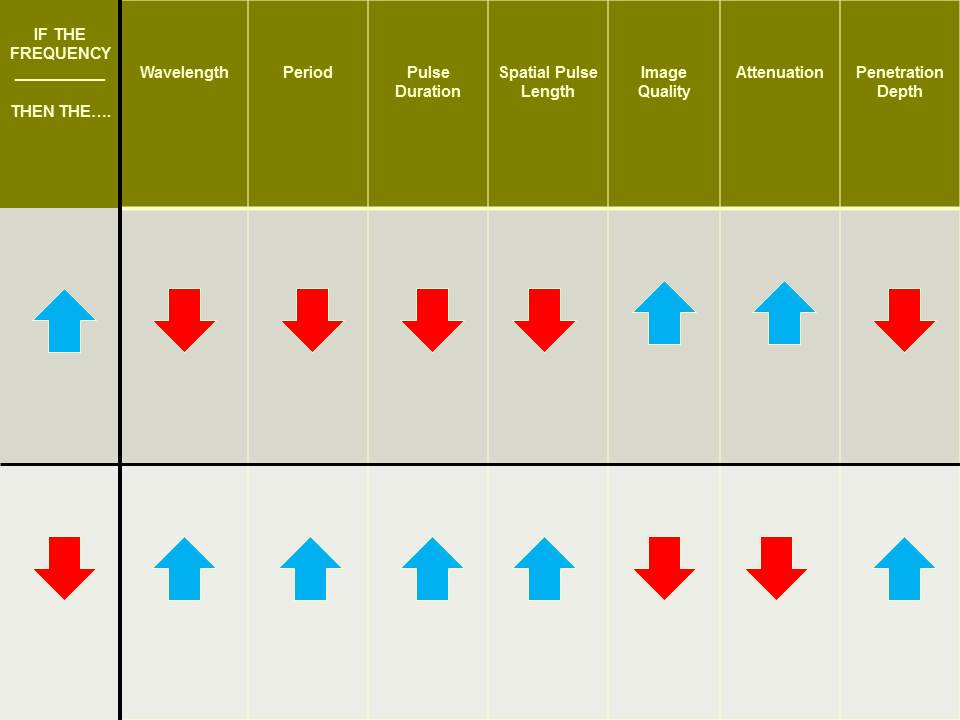
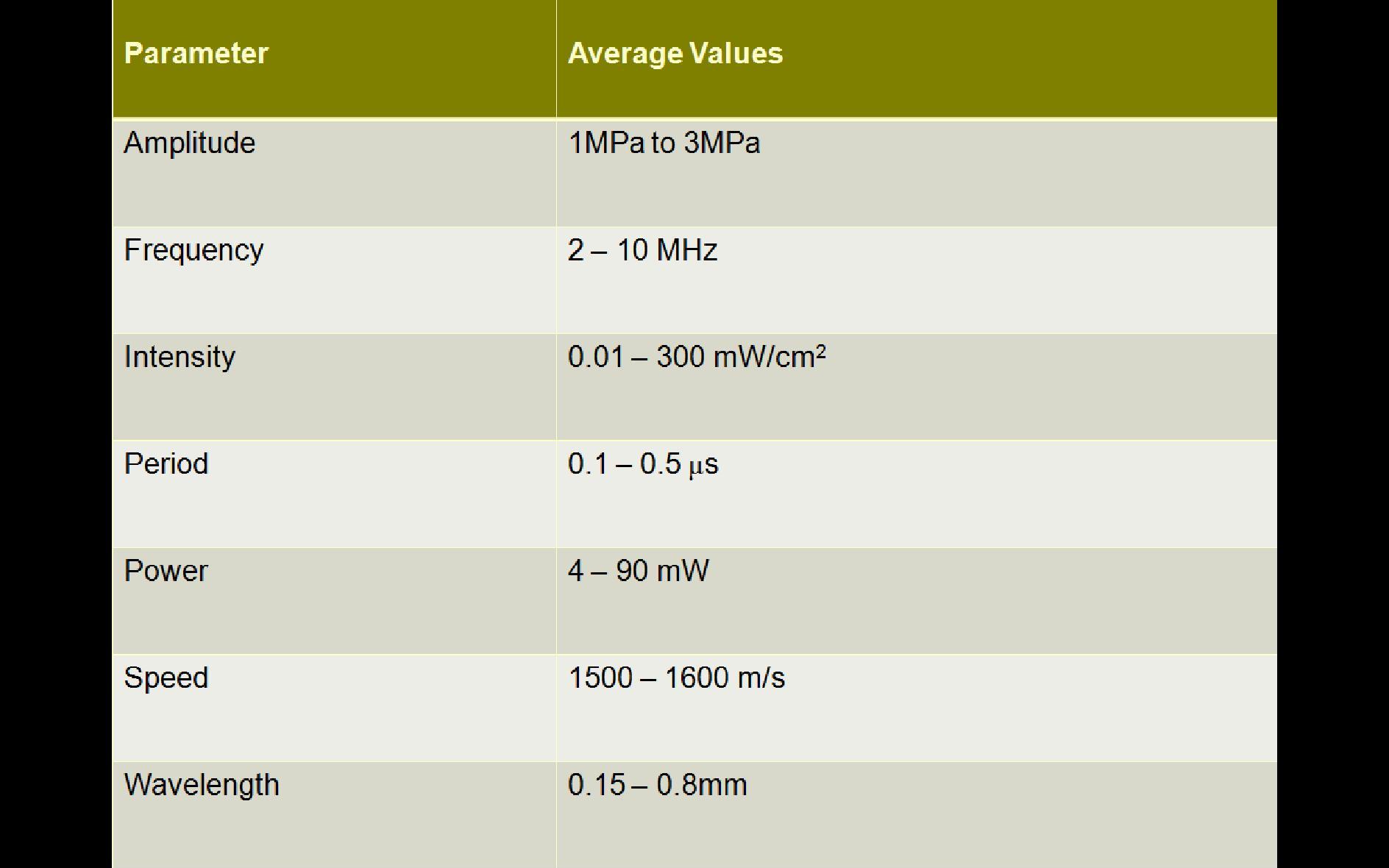
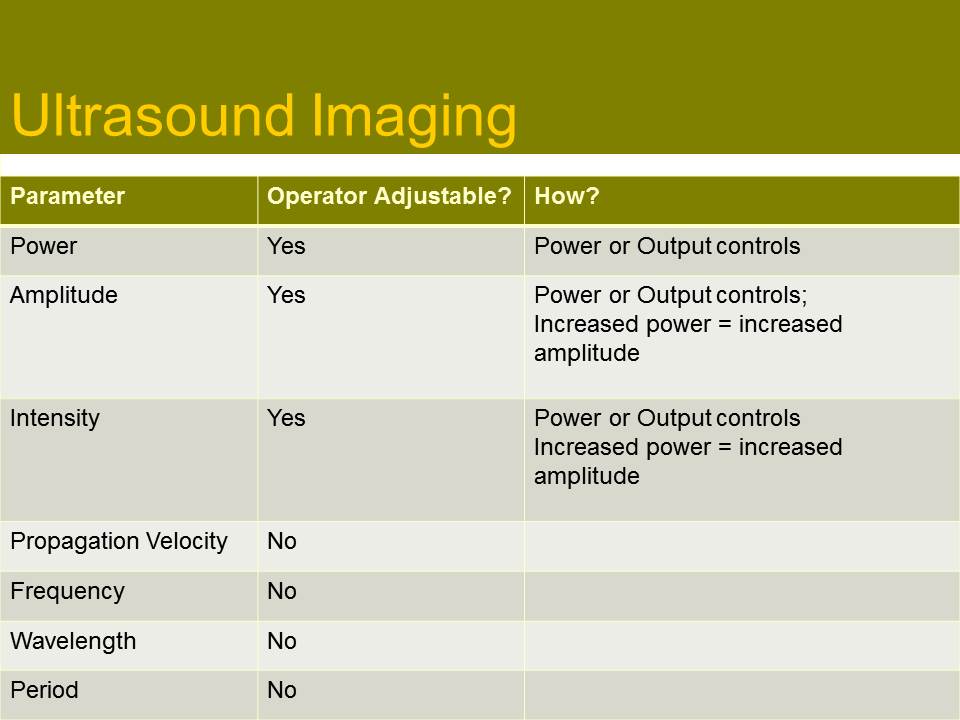
Sound Beam Formation:
Interference:
- Occurs when two waves with different frequencies are produced at the same time and combine to form a new wave
- Destructive: Original waves are waves that are out of phase; Resultant amplitude is smaller than ONE of the individual waves
- Constructive: the individual waves become tangent to each other and have the same phase relationship; Resultant amplitude is larger than BOTH of the individual waves
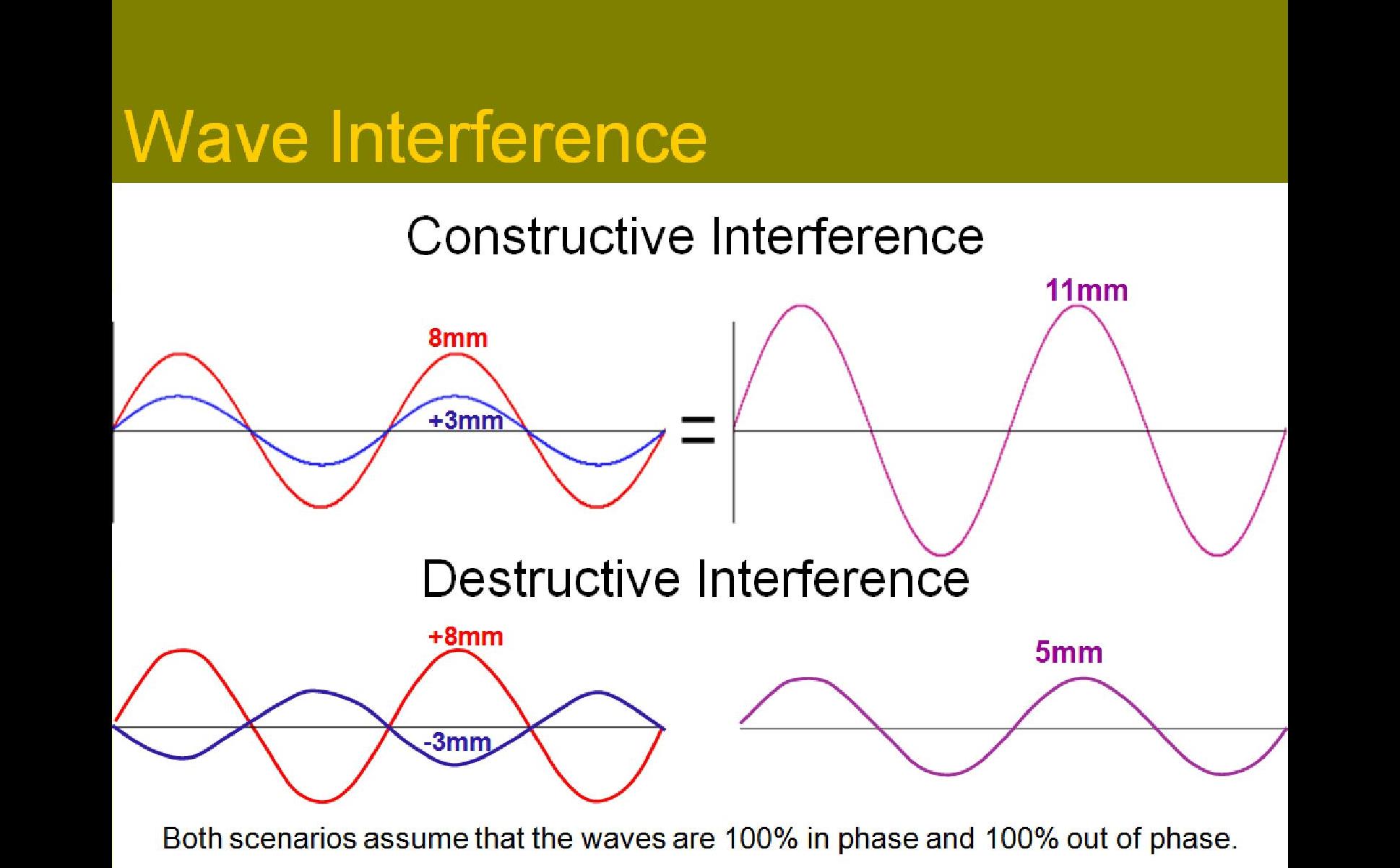
Huygen's Principle:
- Explains the hour-glass shape of the beam
- Sound waves produced by ultrasound transducers originate as numerous points on the surface of a piezoelectric element
- Each point serves as a source of small individual sound wavelets
Available products and price list on next page
Source: https://ultrasoundregistryreview.com/physicsTrial.html
0 Response to "What is of Intensities Has the Same Value for Continuous Wave Us"
Post a Comment